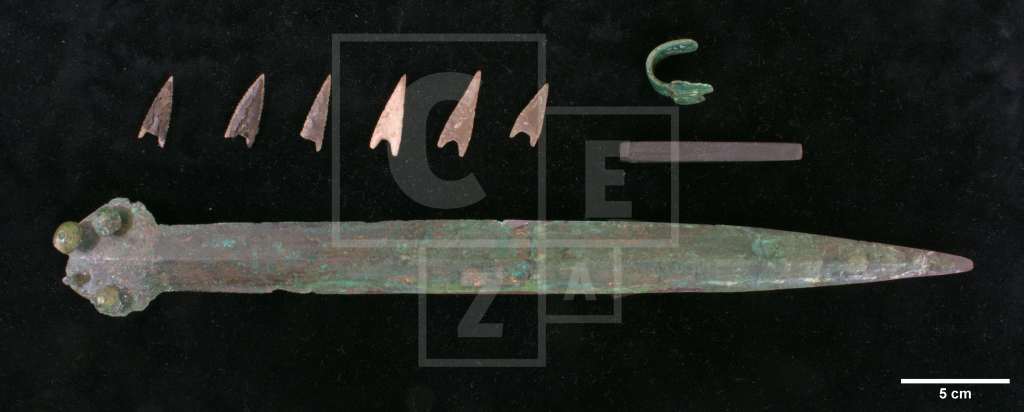The final destination of the sampling campaign is the Landesmuseum Schloss Gottorf in Schleswig-Holstein. This area is one of the key regions of the Sögel-Wohlde district as it showed one of the highest densities of burial mounds containing unique Sögel and Wohlde type swords of the Early Nordic Bronze Age (NBA). A prime example is a monumental burial mound at Rastorf with a diameter of 28 metres as it can be considered as one of the most significant find contexts of the time. The burial site has been in use since the Funnelbeaker period as it started with a dolmen followed by later Neolithic burials. Approximately 10 meters further a second burial mound was erected belonging to the beginning of the NBA.
The most important find was a bronze sword with half a metal hilt, similar to the well-known swords from Nebra and a dagger from Roum. The sword blade itself showed features reminiscent of the Sögel type blades such as a round shaped hilt including incised decorative dots and lines. However, the sword is not entirely identical as it had six rivets and the familiar garland designs were absent. Finally, at Rastorf, a monumental mound was erected that enclosed all the previous phases. The central burial contained a Wohlde blade, further including six flint arrowheads, a bronze buckle, slate pendant as well as a stone shafthole axe. The burial complex at Rastorf plays such an important role since it has multiple overlapping burials forming a chronological sequence of which some have been radiocarbon dated in the 1980’s as well. However, with a large standard error.
Thanks to permission from the Landesmuseum Schloss Gottorf, we are now able to significantly increase the current knowledge of the Sögel-Wohlde metalwork and the chronology of the region, since both metallurgical as well as organic samples are now available to the project. In essence, all of the major regions of the Sögel-Wohlde district have been covered including Lower-Saxony, Schleswig-Holstein, southern Scandinavia and the north of the Netherlands. What remains is interpreting the datasets and present the new data to the archaeological community and the public.

Wohlde blade from Rastorf (SH1971-72.4) including six flint arrowheads, slate pendant and a bronze belt buckle